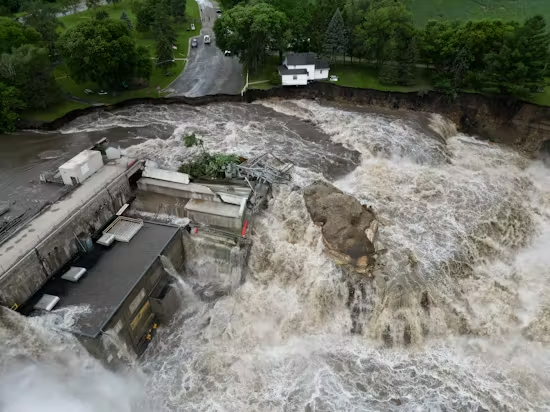It is hard to believe that areas of the country that were in historical droughts just a few months ago are now having everything washed away with historical flooding. Over the past few days and weeks, heavy rains have been pounding ground that has already become quickly saturated and is now giving way to floods and landslides along rivers, lakes, and streams.
The pictures of flooding in and around the Spencer area have many Iowans catching their breath. That part of the state had just recovered from some very extreme drought conditions that lasted more than 200 weeks, and now homes and businesses are under several inches, if not feet of water. Cars are covered, and in some areas affected, floating.
I know that in my home area of Southern Minnesota, they are seeing extreme flooding and damage as well. A long-time neighbor of my mother’s farm took to the skies in his plane to see how the damage looked. He shared pictures that made the farmland look more like the Everglades than a prairie. Highways are flooded leading to disruptions in rural travel. Gravel roads have completely washed out. Reports were that over 13 inches of rain fell in a matter of hours in that part of the country. From central Minnesota to central Iowa, very few farmers have escaped Mother Nature’s bipolar wrath.
The worst came yesterday when the Rapidan, MN dam had a catastrophic failure. The over 100-year-old dam is a few miles south of Mankato, MN, and sits on the Blue Earth River. Flood and storm debris had collected so much that work crews could not clean it up safely. Because of this, and from what we know of water, the river took the path of least resistance. It completely eroded the ground AROUND the dam and washed it away. The structure is facing imminent failure as there is no longer much earth supporting the structure, and the pressure of water and debris continues to increase.
This means a major river connection is in a critical state. The Blue Earth River connects to the Minnesota River near Mankato, and right now the flood damage caused by the dam failure could affect as many as 21 different rural communities and cities, along with thousands of acres of farmland.
As Andy and I discussed on yesterday’s edition of Iowa Ag Matters the water is just the beginning of the issues for landowners and rural communities. Then there is the inevitable cleanup that must happen. Couple that with the hot weather, and it makes for a very smelly chore to be done. Plus, the water will leave behind prime conditions for the growth of mold and mildew. It will take the rest of the summer and fall for these communities to feel whole again. And sadly we are only really a few months away from winter, and that means the race against the clock is on.
Governor Reynolds has petitioned President Biden to expedite a disaster declaration in Northern Iowa. Her counterparts in Minnesota are looking for the same types of federal assistance.
Our thoughts and prayers go out to those who are affected.




